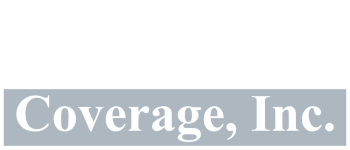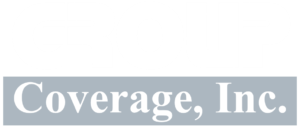Ready-Mix Cement Distributors, Sand & Gravel Haulers Insurance
by William F. Schaake, CIC, CRM, CLCS
Commercial Auto & Truck Insurance
The insurance for an extra heavy weight truck is quite different than covering a vehicle weighing 95% less. The damage from an 85,000-pound truck hitting an object at high speeds can be severe because of the momentum. This is why the Department of Transportation periodically inspects extra heavy weight trucks to ensure the safety of the drivers and those that share the road. In addition, many states have adopted strict pollution measures to ensure the safety of the public and to help protect our environment from fuel spills.
Covering sand & gravel haulers, cement ready mix and concrete pump trucks is not for every insurance carrier. Besides the enormous liability exposure for property damage, bodily injury, and pollution liability, there are other concerns that need to be addressed:
How are vehicle overturns handled? Is there towing coverage as special removal equipment may be necessary to clear an accident? If the truck is down because of an accident, can coverage be offered to protect against the loss of business income?
Basically, truckers’ insurance protects many of the same type of exposures found on a commercial auto policy. Bodily injury and property damage are most often purchased on a combined single limit basis of $ 1,000,000 affording coverage to third parties. However, this limit can vary from state to state and for the type of business insured or the carrier insuring it.
No-fault or personal injury protection (PIP) and additional personal injury protection (APIP) pays for the medical expenses, loss of income and even a small death benefit may be provided for the driver as well as the passengers. However, there are restrictions along state lines, besides workers’ compensation generally provides primary coverage for the driver if they are an employee of the company (please read the policy for a list of the limitations and exclusions). Then there is Optional Basic Economic Loss (OBEL) which provides additional coverage, generally $ 25,000 to pay for medical expenses and loss of income.
Uninsured and supplemental uninsured motorist (UM/SUM) provides protection to the driver when the offending operator of another vehicle has either no insurance or less insurance than what is covered under the trucker’s policy. Medical payments is another type of no-fault coverage, often providing protection to the driver that can be excluding by no-fault (subject to the terms of the policy). And finally, comprehension, and collision which pays for the cost to repair or replace the vehicles in the event of a covered cause of loss.
Other types of coverage are often thought to be protected by a trucker’s policy, however generally these can be purchased on a package or inland marine or cargo form (i.e., contamination and loss of product). Loss of business income on the trucks can be added to many package policies offering loss of business income on the premises. Rental reimbursement and towing are often excluded, this coverage is often granted subject to the terms of the policy.
How is the cost of these policies determined?
Truckers and commercial auto insurance is generally rated on a scheduled vehicle basis. In other words, the premium is charged based on the description, value, weight, year or age, type of vehicle, radius of operation, product transported, mileage, usage, etc. However, some carriers will rate the vehicles on a fleet basis allowing the operator to add or delete vehicles without specifically scheduling the vehicles and pay the premium subject to an audit usually at year end or on a quarterly basis. This is typical with larger accounts where many vehicles are changed weekly or even daily.
Commercial General Liability & Umbrella Insurance
Liability insurance provides coverage for third party liability losses due to bodily injury, property damage, and personal injury (hurting of the persona) caused by accidents and/or acts of negligence by a named insured. The coverage is subject to the terms, conditions, limitations, and exclusions of the policy and within the covered territory. Generally, liability insurance provides coverage for an insured for negligent acts caused during or by the business operations, after operations are complete (completed operations), hazards relating to the premises, products sold, and personal & advertising injury.
Concrete and cement ready mix distributors and pumping operations generally have a higher degree of product liability than a hauler of the product. This is generally due to the curing properties as a result of improper mixing or proportions especially in structural settings. Therefore, it is important to examine what exposures are covered or excluded with respect to the product liability insurance.
Pollution liability coverage is ordinarily excluded on most commercial liability policies (refer to the terms of the policy). In many states, the truckers and/or commercial auto policy removes the pollution exclusion thereby offering coverage for third party liability losses resulting from loading and unloading and/or leakage of fuel from an accident or other covered peril. However, this coverage is generally granted on third-party premises and is not afforded to the property under the care, custody, and control of the insured business.
An umbrella policy typically adds an additional layer of liability coverage over the underlying or base limits. A follow form umbrella generally matches the coverage including the limitations and exclusions whereas an excess liability policy defines what is covered that can deviate from the underlying policy.
How is the cost of these policies determined?
Usually, liability policies are rated on the volume of the business such as the number of units sold or delivered, the gross sales in terms of dollars, or the salaries. The classifications of payroll are determined by the type of jobs and the salaries associated with their respected classes. Umbrella or excess liability policies are usually rated based on a percentage of cost of the underlying liability insurance including the commercial auto/truck and sometimes the workers’ compensation.
Commercial Property, Inland Marine & Cargo Insurance
Property is defined as what is owned by the insured whether it is the contents or business personal property (BPP), the building, the cargo or what is being hauled, tools and equipment, stock, inventory, accounts receivables, loss of business incomes, monies and securities, etc. Most policies have limitations relating to the distance of the property from the insured premises, usually within 100 feet of their being covered by a direct physical loss. Therefore, it is important to understand that the product being transported is generally excluded on a commercial property policy unless the coverage is purchased under a commercial inland/ocean marine form or cargo insurance. Inland/ocean marine and cargo forms cover the damage to the product while during transit, at a temporary location, and even at the described premises. Inland covers between the boundaries of oceans and ocean marine covers on the waterways. Coverage is based on either specifically named perils or on a special form basis (previously known as ‘All Risk’) which is defined by the exclusions not the named perils.
Unique to ready mix cement and concrete distributors would be the inherent exposure of the product drying in the mixing drum due to an unforeseen event such as an accident or vehicle overturn. Coverage may be afforded to not only cover the replacement cost of the product, but the cleanup expense as well. Sand & Gravel haulers should still be concerned about their loss of product due a vehicle overturn or accident.
Depending on how the mixing drum, pumping equipment or truck bed is mounted, it may come as a surprise to discover any damage to the apparatus may not be covered by the commercial truck policy even though physical damage was thought to be extended. Generally, this damage could be covered under the commercial inland marine policy. It’s important to understand why, the primary reason is that many times this equipment is not installed by the original manufacturer of the vehicle. Often the physical damage coverage under a commercial truck policy exclude damage for equipment not permanently mounted or installed after the original manufacturing date (check the policy for the terms, conditions and exclusion as well as the particulars from the vehicle manufacturer regarding the installation of any equipment).
Finally, incidental, and ancillary lines of coverage for monies and securities, credit card fraud, employee dishonesty, electronic data processing, valuable papers records and research, are all important, but often added as supplemental to the package policy. If not, a commercial crime form or policy can cover the exposures relating to theft and dishonest acts caused by the employees and/or outsiders of the organization. Damage to computer and data processing systems can usually be purchased by endorsement under ‘electronic data processing’ or EDP form. And finally accounts receivables and valuable papers, records, and research can normally be added by endorsement.
Workers’ Compensation & Statutory Disability Insurance
All states have workers’ compensation laws that require organizations to provide coverage or a means to pay for their employees’ claims in the event of an on-the-job injury or illness. Please refer to the insurance department or the department of labor in the state for which the business operates and the employees are located or work in. Statutory disability may also be required which provides coverage for off the job injuries and illnesses.
by William F. Schaake, CIC, CRM, CLCS © 2011-2023 All rights reserved.

